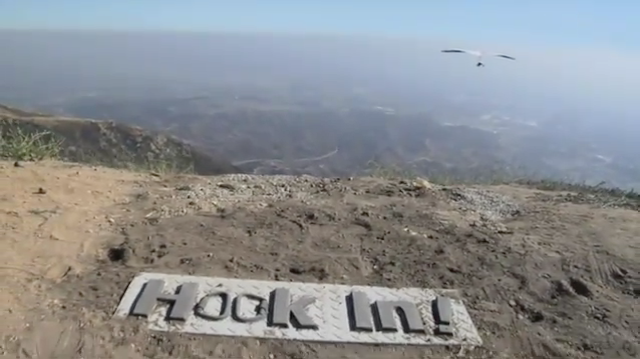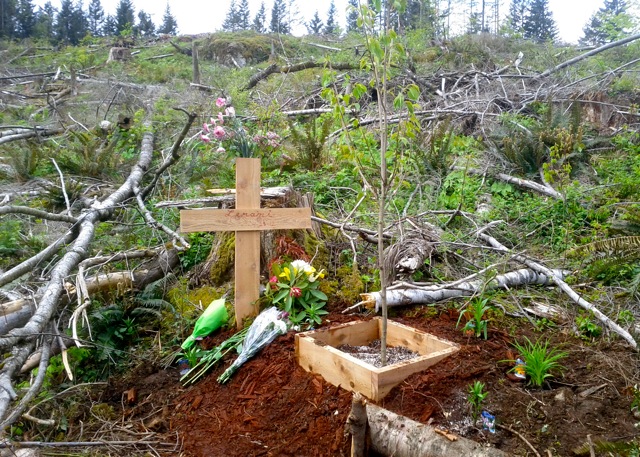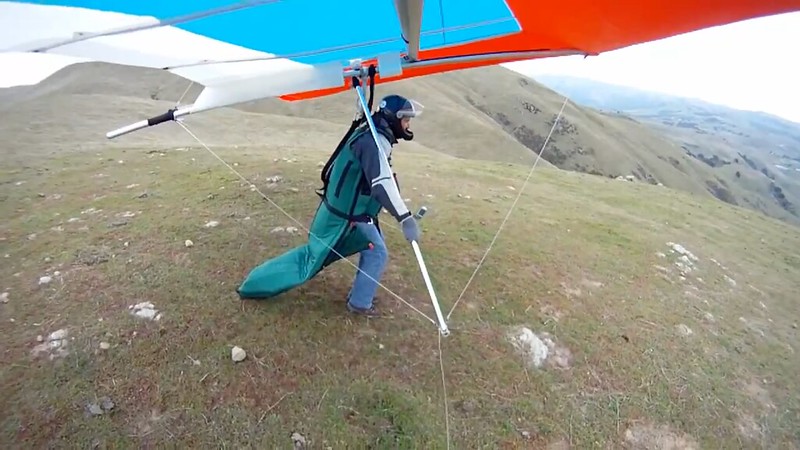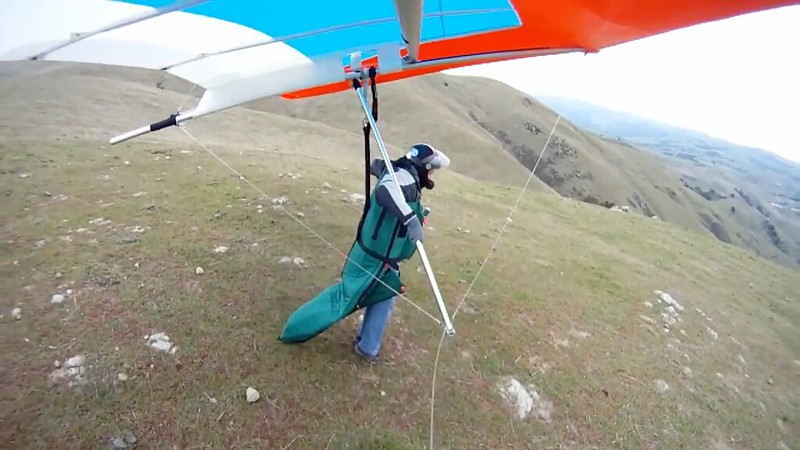Failure to hook in
And just prior to a strong wind launch, your (widespread and highly proclaimed) technique is to hold the glider down on your shoulders to keep it from floating up to the suspension stop and into the dangerous turbulent upper level jet stream.Robert Burgis (BudRob) - 2013/08/23 16:07:48 UTC
In a strong wind launch, my (frowned upon) technique is to leap into the air on the second step while pushing out.
Pretty tough to hold a glider down on your shoulders when the wind is above 15-20.I call this my "superman" launch and I have done it my whole flying career when the wind is above 15-20.
What if you had just let it float up...In this case the glider just pulled itself out of my hands as I pushed out and I fell back onto the ramp before reaching the end.
http://www.youtube.com/watch?v=doe_sNB1wbg
...before accelerating from the beginning of the ramp?
Right. AFTER you're at the point at which getting yourself beat up and totaling your glider is looking like a pretty good option.The pulling away from me was so strong that there was no doubt what the issue was a no decision to make.
What did you do to your left foot and how did you do it? {Please let it be the result of really nailing a no stepper in the middle of the Kagel putting green.)I fell back to earth before the end of the ramp and the loose dirt provided a soft impact that caused no additional damage to my still healing left foot.
Good thing you weren't flying McConnellsburg, Lookout, Henson, Whitwell... huh?However my forward motion took me over the edge and I went over head first.
Glad it wasn't any worse. Great wake-up call, wasn't it?This is where I sustained the injury to my left hand and wrist, which although still swollen, is much improved this morning. There are marks on my helmet and I also found a slight bruise on my right thigh. Otherwise the only additional injuries were to my pride and my bank account.
http://www.youtube.com/watch?v=2mX2HNwVr9gI was concerned about where the hell the glider was (maybe still flying?) so I stood up and looked around right away, but saw nothing. I had to be shown where the glider ended up.
Hang Gliding Fail
andyh0p - 2011/04/24 - dead
03-0325 - 06-0511
http://live.staticflickr.com/65535/13512258445_6b5a3662d0_o.png
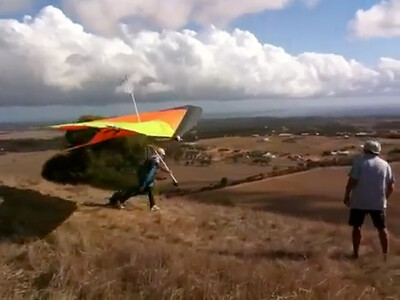
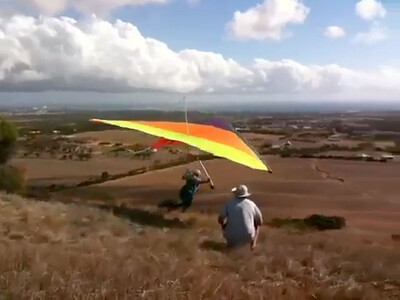
http://live.staticflickr.com/65535/12931220073_1609b59b17_o.png
http://live.staticflickr.com/65535/52378864885_3b8ca2da8c_o.png
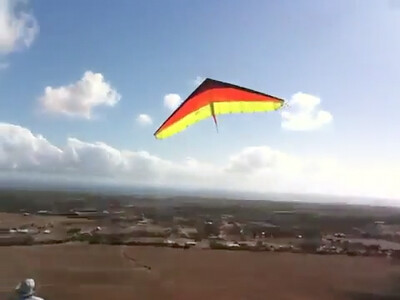
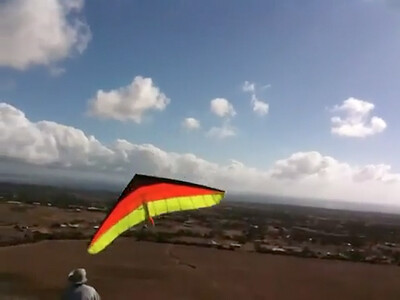
http://live.staticflickr.com/65535/52378864870_2129572e3a_o.png
18-0919 - 21-1025
And, not the least bit surprisingly "Pre Flight Safety for Hang Gliding - Revision" star NMERider doesn't have a single goddam useful comment on this one.I only wish I could have seen it plow in. It seems to me that I deserved that much satisfaction for the entertainment that I provided. But no, I didn't get to see it; and surprisingly even Jonathon has no video to show me...
Ya know what makes me really shudder, Jonathan?NMERider - 2013/08/23 19:23:50 UTC
Yes that makes me very sad. Had I left the camera to record stills while struggling at the end of the ridge I would have surely caught your glider in free flight. What I saw from a quarter mile away was Rob having a great launch with his glider immediately climbing out.
Then I saw Rob make this magnificent swoop back at the hillside with his glider's shadow rapidly approaching the glider. Then I shuddered as I saw Rob and his glider pile in below the PG ramp and then turtle.
http://www.youtube.com/watch?v=j7NurwKyyEE
...that Rob was connected to his glider. Big surprise.I then assumed...
Yeah Jonathan......it had actually been another blown launch from the reconfigured ramp and the glider was really in a mush the whole time.
I didn't learn until five minutes later (from Jim) what had happened. It's funny how things appear one way and then you watch the video and find out it was nothing like your memory told you.
George Whitehill - 1981/05
The point I'm trying to make is that every pilot should make a second check to be very certain of this integral part of every flight. In many flying situations a hang check is performed and then is followed by a time interval prior to actual launch. In this time interval the pilot may unconsciously unhook to adjust or check something and then forget to hook in again. This has happened many times!
If, just before committing to a launch, a second check is done every time and this is made a habit, this tragic mistake could be eliminated. Habit is the key word here. This practice must be subconscious on the part of the pilot. As we know, there are many things on the pilot's mind before launch. Especially in a competition or if conditions are radical the flyer may be thinking about so many other things that something as simple as remembering to hook in is forgotten. Relying on memory won't work as well as a deeply ingrained subconscious habit.
In the new USHGA rating system, for each flight of each task "the pilot must demonstrate a method of establishing that he/she is hooked in, just prior to launch." The purpose here is obvious.
Memory can be real problematic every now and then for people playing this game. That's why we have RULES...Rob Kells - 2005/12
Several pilots have launched unhooked after doing a hang check because they were distracted and unhooked from the glider, and then, remembering having done a hang check earlier, they ran off the hill unhooked.
"Knowing" that if you are in your harness you must be hooked in, means that if something comes up that causes you to unhook for any reason, you are actually in greater danger of thinking you are hooked in when you are not. This happened to a pilot who used the Oz Method for several years and then went to the training hill for some practice flights. He unhooked from the glider to carry it up the hill. At the top, sitting under the glider with his harness on, he picked up the glider and launched unhooked. Fortunately he was not hurt... but I bet he was very surprised.
...that people really need to follow - regardless of what their douchebag instructors like:With each flight, demonstrates a method of establishing that the pilot is hooked in just prior to launch.
- Joe Greblo
- Rob McKenzie
- Matt Taber
- Steve Wendt
- Jim Rooney
- Paul Voight
- Ryan Voight
- Tom Galvin
are and aren't teaching them.



